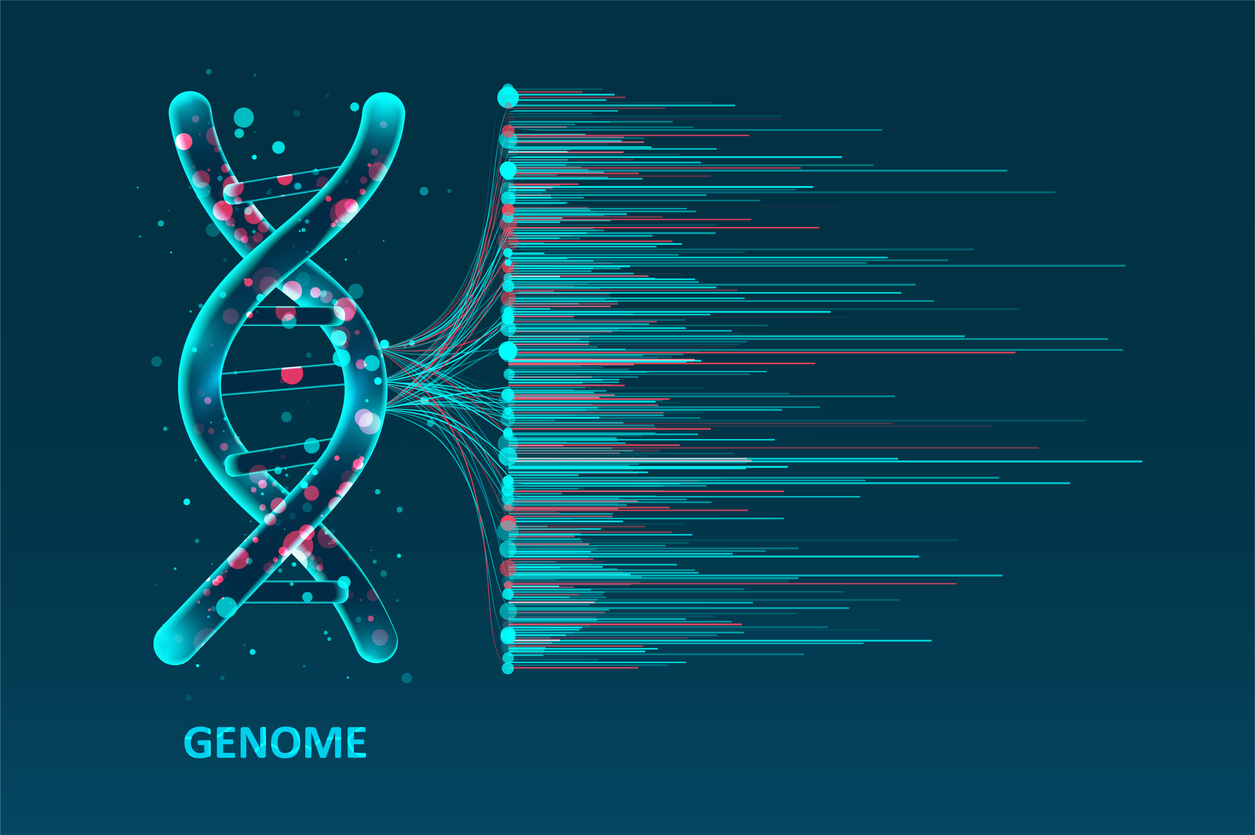Key Takeaways:
- Regulatory elements in non-coding DNA regions play critical roles in controlling gene expression and biological processes.
- Misregulation of enhancers, promoters, and other non-coding elements contributes to the pathogenesis of various diseases, including rheumatoid arthritis, coronary artery disease, and melanoma.
- Integrating whole genome sequencing with clinical phenotypic information from electronic health records can uncover new insights into disease mechanisms driven by non-coding variants.
- Elucidating the roles of regulatory elements will facilitate development of more precise therapeutics and diagnostics tailored to individuals.
The quest to decipher the intricate underpinnings of human disease has long fixated on protein-coding genes. However, a rapidly burgeoning field is shining a spotlight on the proverbial dark matter of the genome – the vast, enigmatic expanse of non-coding DNA regions harboring regulatory elements that orchestrate gene expression. Enhancers, promoters, insulators, and other regulatory sequences exert exquisite control over when, where, and to what extent genes are expressed, shaping the symphony of cellular processes that sustain life. Yet, when these regulatory elements go awry, the consequences can be catastrophic, manifesting as devastating diseases that have long confounded researchers and clinicians alike.
Rheumatoid Arthritis and Non-Coding Dysregulation
Rheumatoid arthritis (RA), characterized by excruciating joint inflammation and debilitating pain, exemplifies the profound impact of dysregulated non-coding elements. Enhancers and promoters governing the expression of pivotal inflammatory genes, such as those encoding the cytokines TNF-alpha and IL-6, have been implicated in the pathogenesis of RA. Mutations or epigenetic modifications in these regulatory regions can trigger aberrant cytokine production, fueling the vicious cycle of autoimmune attack and joint destruction that defines this debilitating condition.
Coronary Artery Disease and Lipid Metabolism
Another striking example is coronary artery disease (CAD), a leading cause of mortality worldwide. The insidious buildup of atherosclerotic plaques within the coronary arteries, narrowing these vital conduits and heightening the risk of heart attacks, is intimately linked to disruptions in lipid metabolism and inflammation. Regulatory elements controlling the expression of genes such as PCSK9, a master regulator of cholesterol homeostasis, have been implicated in CAD etiology. Variants within these non-coding regions can dysregulate PCSK9, precipitating dyslipidemia and promoting the relentless progression of atherosclerosis.
Melanoma and Telomerase Regulation
Melanoma, a deadly form of skin cancer arising from pigment-producing melanocytes, further underscores the profound influence of non-coding regulatory aberrations. Researchers have identified mutations in the TERT gene’s promoter region in a significant proportion of melanoma cases. These mutations lead to enhanced telomerase activity, conferring cellular immortality and fueling the unchecked proliferation that characterizes this aggressive malignancy.
The Tip of the Iceberg
While these examples illuminate the pivotal roles of non-coding regulatory elements in disease pathogenesis, they represent merely the tip of the iceberg. The majority of disease-associated variants identified through genome-wide association studies reside within non-coding regions, and their functional implications are largely unexplored. However, interpreting the functional significance of these complex regions is challenging due to their diverse roles and interactions. This underscores the pressing need to delve deeper into the intricate regulatory landscapes governing gene expression and to elucidate how non-coding variants contribute to disease susceptibility, progression, and severity.
Harnessing Genomics and Clinical Data
Fortunately, the advent of transformative technologies is ushering in a new era of scientific discovery. For example, integrating whole genome sequencing data with clinical phenotypic information from electronic health records (EHRs) provides the means to uncover insights into disease mechanisms driven by non-coding variants.
Envisioning a Future of Precision Medicine
Imagine a future where an individual’s genomic information, meticulously annotated with regulatory element annotations, is seamlessly integrated with their EHR to capture a rich tapestry of clinical manifestations, treatment responses, and diagnostic imaging data. This convergence of multimodal data streams would empower researchers and clinicians to unravel the intricate interplay between non-coding regulatory variants and disease phenotypes, illuminating novel etiological factors that have long evaded detection.
Transformative Diagnostics and Therapeutics
By decoding the enigmatic language of non-coding regulatory elements and their misregulation in disease, we stand to gain profound insights that will catalyze the development of groundbreaking diagnostics and therapeutics. For instance, personalized genetic screens could assess an individual’s risk of developing specific diseases based on their unique constellation of non-coding variants and enable early intervention. Similarly, tailored therapeutic interventions that precisely modulate the activity of dysregulated enhancers or promoters could restore homeostasis and alleviate disease burden, offering more effective and targeted treatments.
Interdisciplinary Collaboration
As we embark on this exhilarating journey, fostering collaborations between geneticists, bioinformaticians, clinicians, and pharmaceutical partners will be paramount. By aligning interdisciplinary expertise and leveraging cutting-edge technologies, we can unlock the transformative potential of non-coding regulatory elements, ushering in a new era of precision medicine that promises to redefine our understanding and treatment of human disease.
Sources:
- Hnisz, D., et al. (2013). Super-enhancers in the control of cell identity and disease. Cell, 155(4), 934-947.
- Tak, P. P., & Firestein, G. S. (2001). NF-κB: a key role in inflammatory diseases. The Journal of clinical investigation, 107(1), 7-11.
- Abifadel, M., et al. (2003). Mutations in PCSK9 cause autosomal dominant hypercholesterolemia. Nature genetics, 34(2), 154-156.
- Huang, F. W., et al. (2013). Highly recurrent TERT promoter mutations in human melanoma. Science, 339(6122), 957-959.
- Maurano, M. T., et al. (2012). Systematic localization of common disease-associated variation in regulatory DNA. Science, 337(6099), 1190-1195.


